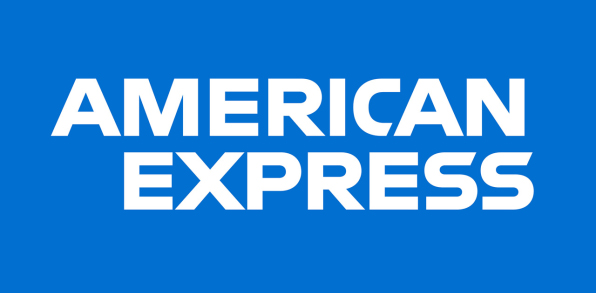Since its release, Windows 11 has been creating a lot of buzz. It has brought a new look, improved performance, and added features. But is it worth upgrading? Like any major OS update, it comes with both advantages and drawbacks.
In this blog, let’s evaluate the pros and cons of upgrading to Windows 11 so that we can make an informed decision.
The Pros of Windows 11
Windows 11 is more than an update, but rather a revolutionary upgrade that sets the standard for what it’s like to have an operating system. Improvements and new features show that Microsoft puts some thought into user experience and innovation. Windows 11 has been created to improve your computer experience, from its visual overhaul to speed boosts.
Let us examine the main benefits that set Windows 11 apart regarding technology.
Revamped User Interface
The Windows 11 user interface is an improvement over its predecessors and a complete overhaul of how users engage with PCs. It is a harmonious union of form and functionality intended to make computers more productive and user-friendly. The new user interface shows that the company values the aesthetic aspect of functionality and makes computers more enjoyable to use.
Improved Performance
Windows 11 is not solely concerned with aesthetics; it is a performance juggernaut. This operating system has been optimized for performance to guarantee that your computer operates efficiently and effortlessly. Windows 11 is designed to astound with its performance enhancements, whether loading up or operating complex applications.
Easily-Accessible Snap Layouts and Groups
Windows previously enabled snapping windows to the sides or corners of the screen in basic configurations. This feature was first introduced in Windows. The functionality was first “borrowed” from other operating systems but was further developed with the FancyZones feature included in Windows PowerToys.
Gaming improvements
Windows 11 does not leave gamers out in the cold. It offers huge improvements to performance and the entire experience. Auto HDR, which automatically enhances the game’s high dynamic range, greatly improves visual quality.
Additionally, DirectStorage, initially developed for the Xbox, is now available, drastically cutting down on those pesky loading times. Users can now access their games in less than a second. Even if DirectStorage works with subsequent Windows 10 versions, Windows 11 is still touted as the best platform for gaming due to its many speed enhancements.
Increased security
Windows 11 focuses on security. Microsoft has increased the hardware requirements to further secure the system, including TPM 2.0 and Secure Boot. Such features protect the system from malware, phishing attacks, and other security threats. Windows 11 is, therefore, considered more secure than any of its predecessors.
Better Integration with Microsoft Services
One of the best integration experiences is between Windows 11 and Microsoft services like OneDrive, Microsoft Teams, and Office 365. Team integration becomes an easy mode of communication and collaboration, mainly among remote workers and students. This OS will seamlessly work with cloud-based tools to maximize connectivity and productivity.
The Cons of Windows 11
Windows 11 is a gigantic OS development leap but has several serious drawbacks. From the equipment needs to human adaptability, these drawbacks make potential users think twice and face serious problems.
These drawbacks show that Windows 11 can fail to meet expectations or cause problems for some users; therefore, it is important to consider them thoroughly. The features of Windows 11 that may make some people think twice about upgrading are worth exploring.
System requirements and compatibility issues
Windows 11 upgrading instructions are among the most frequently asked questions. There are a few obstacles to Windows 11’s compatibility and requirements. To operate Windows 11, you will need a CPU at least Ryzen 2000 or an Intel 8th Generation.
As an additional need, your laptop would have to be able to handle TMP 2.0, which was a limitation that Windows 10 did not have. Nevertheless, most contemporary computers already use this hardware security chip.
Limited Customization
Windows 11 is very visually pleasing but criticized because users cannot be in charge of much in terms of experience. It will make many accustomed users quite irksome who prefer having their computers to a tee. It can be somewhat of a bummer to users who love to personalize as they can be pretty restricted with design, though visually very pleasing.
Learning Curve
Windows 11’s new features and overhauled user interface are inventive, but they need some time to get used to. Users sometimes struggle to get a feel for the new interface and features when moving from a previous version. This adaption time might be a downside for those who depend on personal computers for business or other important activities.
Less Taskbar
From a usability standpoint, Windows 11’s taskbar is more of a regression despite its superb aesthetics.
At first, you could not drag the taskbar to any location on the screen. Now, it is restored, but those pesky limitations are still there. The days of Windows versions past when you could just “drag it where you want it” are gone.
Even Microsoft admitted that the taskbar in Windows 11 was not as good as it might be, and the company went on to improve it in later upgrades released after the debut of Windows 11.
One gets the impression that there is no specific concept of how it should appear or function, and it is a continual work-in-progress in which Microsoft experiments with various things to determine “what will stick” with people.
Compatibility issues
Windows 11 may not be entirely compatible with some older apps and hardware peripherals. This might result in significant interruptions and the need for further upgrades or replacements.
Potential bugs and stability issues
Windows 11 may have bugs or stability concerns like any other program, impacting performance until updates and patches address these issues.
Incomplete Features at Launch
When Windows 11 was released, several features from Windows 10 were missing or not fully developed. While Microsoft has been gradually reintroducing some of them through updates, early adopters had to deal with an incomplete experience. Features like the ability to natively run Android apps were promised but took time to roll out.
Should You Upgrade to Windows 11?
Upgrading to Windows 11 is a hardware and need-based decision. If you have a modern PC that meets the system requirements and wants the latest features, improved security, and better performance, then upgrading makes sense. Gamers and professionals using Microsoft services may find the new OS beneficial.
However, if you have an older PC that doesn’t meet the specifications required for running this system, rely on legacy software, or can’t accept the changes to UI and customization, you should probably stay with Windows 10 for now. Microsoft has promised to support Windows 10 until at least 2025, giving users time to decide when or even if to upgrade.
Final Thoughts
Windows 11 brings a host of improvements, from a sleek design to productivity enhancements and stronger security. Microsoft Windows 11 Pro further enhances the experience for professionals and businesses. However, the higher system requirements, limited customization, and compatibility issues may be drawbacks for some users. Carefully weigh the pros and cons before making the switch to ensure it aligns with your needs.
Are you considering upgrading to Windows 11 or sticking with Windows 10? Visit us now at the Softvire Global Market and check these out!



